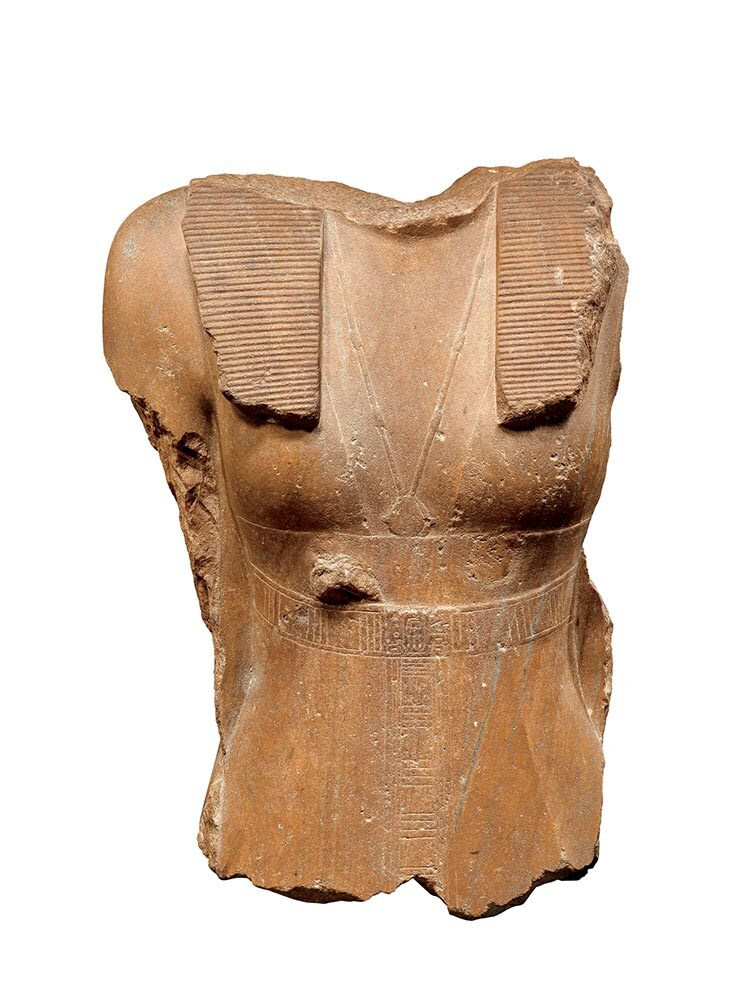The newest registered user is bitaacademy
Our users have posted a total of 44629 messages in 6567 subjects

WORLD CLOCK
NAT GEO * Egypt’s 1st ‘woman king *
Valley of the Sun Casual Club :: WORDS , FACTS , DATES , GAMES & TRIVIA & HISTORY :: NATIONAL GEOGRAPHIC
 NAT GEO * Egypt’s 1st ‘woman king *
NAT GEO * Egypt’s 1st ‘woman king *

A headless bust of Neferusobek depicts the female king—perhaps the first ever—in both stereotypical female and male dress. This statue may have been recarved once she took the throne, adding the iconography of kingship, namely the kilt and Nemes headdress.
PHOTOGRAPH COURTESY MUSÉE DU LOUVRE, DIST. RMN-GRAND PALAIS/GEORGES PONCET/ ART RESOURCE, NY
Was this woman Egypt's first female pharaoh?
Neferusobek doesn't have the name recognition of Cleopatra and Hatshepsut, but she may have been the first woman to rule the ancient kingdom.
ByKara Cooney
April 18, 2023
•8 min read
Ancient Egypt was essentially a man’s world, lorded over by the pharaoh. But at times during its roughly 3,000-year history, women ruled, and six women—Merneith, Neferusobek, Hatshepsut, Nefertiti, Tawosret, and Cleopatra—climbed the highest and wielded the most significant power in ancient Egypt, not as manipulators of their menfolk, but as heads of state. Of these powerful kings, Neferusobek was the first woman to take the Egyptian kingship as her formal title in an unprecedented instance of female power. How did she launch herself to the pinnacle of her male-dominated society?
(Nefertiti was more than just a pretty face.)
Wealth and excess
Neferusobek was the product of the royal harem and nursery during the 12th dynasty (1939–1760 B.C.). It's not clear exactly who she was, but Neferusobek’s mom was one of hundreds of women who sexually served the king, Amenemhat III. The royal princess understood that in order to maintain the familial lineage she would one day marry her aged father, or, when he died, she would be linked to her brother, the next king, as a great royal wife of the highest bloodline. (In fact, Neferusobek’s mother may have been the king’s daughter, too, though there is no record of it.) Even though it started out that way, this was not to be her fate.

Both men and women wore pectorals such as these (circa 1878–1840 b.c.); the one at left bears the name of Amenemhat III.
PHOTOGRAPH BY KENNETH GARRETT
Line of succession
Upon his death, King Amenemhat III son, Amenemhat IV, assumed the throne and as planned, Neferusobek became his wife. For Egyptian nobility, this news was greeted with a great sigh of relief, knowing that their status quo would be upheld, for another few decades at least, and that new heirs would soon enter the royal line. Neferusobek was now queen, and a king’s daughter to boot. After just nine years of rule, however, Amenemhat IV died, having produced no viable heirs.
(Ramses II ruled for 70 years and had 100 children. Egypt paid the price.)
All the courtiers looked to the royal family to solve the situation: to maintain the balance of power among the elites, to keep the wealth pouring in. The 12th dynasty found itself in a succession crisis of the highest order. As the highest-ranked family member left, Neferusobek stepped forward as nothing less than king, using her descent from the great King Amenemhat III to justify her rule. For the first time in human history, a royal Egyptian woman claimed the highest office in the land—the kingship itself—for the simple reason that there was no royal man to take it.
Amenemhat III’s final resting place

The Black Pyramid was built by Neferusobek’s father, King Amenemhat III.
PHOTOGRAPH BY JOSE LUCAS, ALAMY
To uphold her father’s dynasty and further legitimize her kingship, Neferusobek ordered the completion of her father’s pyramid complex at Hawara. She also took an unprecedented step and ordered her father deified within his temple spaces. Although all kings were considered divine, and all dead kings had a greater divinity among the company of ancestor kings, Neferusobek went a step further and created special cult spaces for the worship of her father as a god at his temple at Hawara. She set aside extensive lands whose income of grain and flax and livestock would support an ongoing cult, paying priests an annual salary to regularly make offerings to the statues of the dead king.
A display of femininity
When Neferusobek ascended the throne, she went through weeks of temple activities, initiations, meditations, and ceremonies that invested her with the divine power of sovereignty (which Egyptians agree she had possessed since the time of her birth). It was also determined that “queen” was not the proper title for her; queens were subservient to their sovereign. As such, she received five royal names, including (S)he of the Sedge Plant and the Bee, Mistress of the Two Lands, and Daughter of Re—kingly titles that were feminized specifically for her in Egyptian hieroglyphics. She was king, period.
(How three rebel queens of Egypt gave birth to a new kingdom.)

HISTORY MAGAZINE
How did this female pharaoh survive being erased from history?

HISTORY MAGAZINE
Ramses II ruled for 70 years and had 100 children. Egypt paid the price.
As soon as she became king, Neferusobek immediately got to work protecting the family dynasty. She had her images placed in temples all around Egypt; three statues were found at the eastern delta’s Tell el Dab’a in association with 12th dynasty temple installations. Frustratingly, none of her named statues preserve her face.
One of these statues sits in the Louvre today. Headless, unfortunately, it depicts her wearing the Nemes headdress falling over her shoulders, the very same striped headcloth that Tutankhamun would wear much later in his golden funerary mask. She is wearing a queen’s dress, but she has tied on the kilt of kingship over her feminine garb, knotted much higher than a masculine king’s kilt would have been: above her navel and just below her breasts. Around her neck she wears the same pierced heart amulet her grandfather and her father wore, a sign of 12th dynasty strength and of her direct linear descent from those great kings. She did not lie to her people or to her gods about her gender; her femininity was there for all to see. And yet she layered the masculinity of her new office over her feminine self.
(Who was Egypt's first pharaoh?)

A papyrus illustrates worship of the god Sobek—Neferusobek’s divine crocodile namesake.
PHOTOGRAPH COURTESY EGYPTIAN NATIONAL MUSEUM, CAIRO, EGYPT/G. DAGLI ORTI/DE AGOSTINI PICTURE LIBRARY/BRIDGEMAN IMAGES
End of an era
During Neferusobek’s third year as king, the Nile River experienced a drought, sending Egypt to the brink of disaster as crops failed and famine struck. No doubt she tapped her rich grain stores, opening state-controlled bins to feed hungry Egyptians by using the great wealth amassed from years of plenty.
Meanwhile, everyone likely talked and schemed about the fact that Neferusobek was the last of her family—and that a change in dynasty was soon to come. And then it happened, much sooner than expected. After only three years, 10 months, and 24 days, according to the Turin king list, Neferusobek’s reign came to an abrupt conclusion. With her death came the end of one of Egypt’s greatest ruling families.
(How King Tut conquered pop culture.)
How Neferusobek died remains an open question. Some Egyptologists have postulated that she met an untimely end, murdered for taking the kingship that didn’t rightfully belong to a woman. But the fact that she took the sovereignty and ruled unopposed for years suggests otherwise. And the Egyptians, in their way, thanked Neferusobek for what she had done for them: She was preserved in most of the king lists. She wasn’t considered heretical or undeserving because of her sex. She protected her land in a time of distress, and for that she was honored.
 Similar topics
Similar topics» BAD ASS WOMAN OF THE YEAR IMSO
» WISETRIVIA ANSWER PAGE
» CHALLENGING THE KING
» STEPHEN KING
Valley of the Sun Casual Club :: WORDS , FACTS , DATES , GAMES & TRIVIA & HISTORY :: NATIONAL GEOGRAPHIC

 Events
Events
















































































» AWESOME SPORTS GIF's...7
» LET's GO SHORTS & GIF's...6
» AWESOME SPORTS GIF's...6
» TATTOO YOU & REDO's TOO...15
» CREEPY PICS & PEOPLE...5
» MEME OOH LALA..35
» WORD DAILY Word of the Day: * centenary *
» Word Genius Word of the day * scintilla *
» APRIL NATIONAL CELEBRATION DAYS APRIL 28 2024
» Word Genius Word of the day * Aplomb *
» APRIL NATIONAL CELEBRATION DAYS APRIL 27 2024
» MEMEZONA...3
» SEEING RED & FRECKLES...14
» YES,........BUT